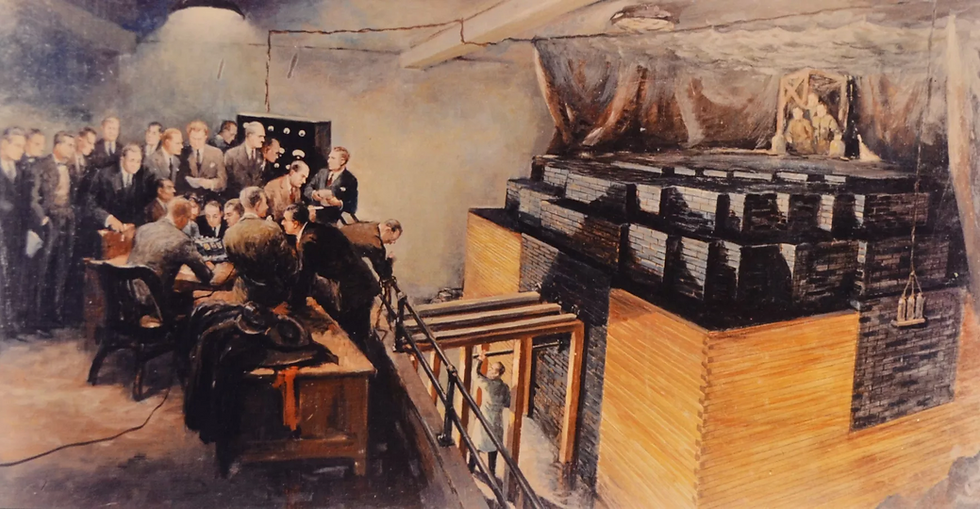This Day in Science Fiction History: 2 December
- Dec 2, 2023
- 3 min read
Historical Entry—Wednesday, December 2, 1942

Thwok. That’s the sound of a squash ball striking the wall and bouncing back. The ball has careened sideways, striking another wall and rebounding toward a player. The player swings their racquet and strikes the ball, starting the series of reactions over again. These reactions are predicted by the third law of motion—when two bodies interact, they apply forces to one another that are equal in magnitude and opposite in direction. That for every action, there is an equal and opposite reaction. But what does the game of squash have to do with the first nuclear reactor?
Two things. The first is that fission nuclear reactors work partially under the principles of the third law of motion. By the impact of a uranium atom on another, the two atoms will impart momentum to each other, thereby causing the atoms to move away from each other and into other atoms. This is the basic motion structure of a nuclear chain reaction.
The second thing is that the first successfully operated nuclear reactor was built in a squash court at the University of Chicago in Chicago, Illinois.
Wait…Chicago? Why Chicago? We need to dive into a bit of background to answer that.
The Manhattan Project started in 1939 due to a letter written by Albert Einstein and Le Szilard to U.S. President Franklin D. Roosevelt, explaining the energy that could be harnessed by splitting atoms. They further explained that the energy could potentially be harnessed as a weapon and that Nazi scientists were likely aware of this and working on creating such a weapon.
One of the first things the Manhattan Project needed to prove was that a sustained nuclear chain reaction could be created. Chicago was chosen as the research location for this part of the project because it already was home to many of the scientists chosen, it was far from either coast (making it almost impossible for anyone to attack), and it had plenty of space for the project.
Under the code-name “the Metallurgical Laboratory”. The unit was headed by Professor Arthur Holly Compton, the dean of the physical sciences at University of Chicago. Also attached to the project were Leo Szilard, Eugene Wigner, and Enrico Fermi. There were hundreds of other staff members, though few knew what the project really was.
Though originally planned to be built on land west of Chicago, construction problems arose. Prof. Compton decided to build the reactor where the previous experiments had been performed, the old squash court under the abandoned Stagg Field football stands. For two solid weeks crews worked building the 20-foot-tall housing of graphite bricks, purifying both graphite and uranium, arranging the fuel blocks in 57 layers where the scientists had mathematically determined, and fitting the holes for the cadmium control rods. The finished reactor was named Chicago Pile-1 (CP-1).
The test began at 3:25 pm CST, the operators began moving the control rods. Scientists watched the neutron count detectors to determine how many atomic collisions were occurring. It wasn’t enough, so they moved more rods. These adjustments in rod positions continued until 28 minutes later, at 3:53 pm CST, the scientists declared the reactor was critical. That is the number of reactions each second was equal to the number of reactions from the previous second. The first man-made controlled nuclear chain reaction had been achieved.
They toasted their success with paper cups filled with Chianti wine and then signed the straw wrapper around the empty wine bottle.
CP-1, the first nuclear reactor goes critical
Historical Fact
Manhattan Project
1942
This Day in Science Fiction History examines notable events, real and fictional, concerning fantasy and science fiction in various media.
Comments